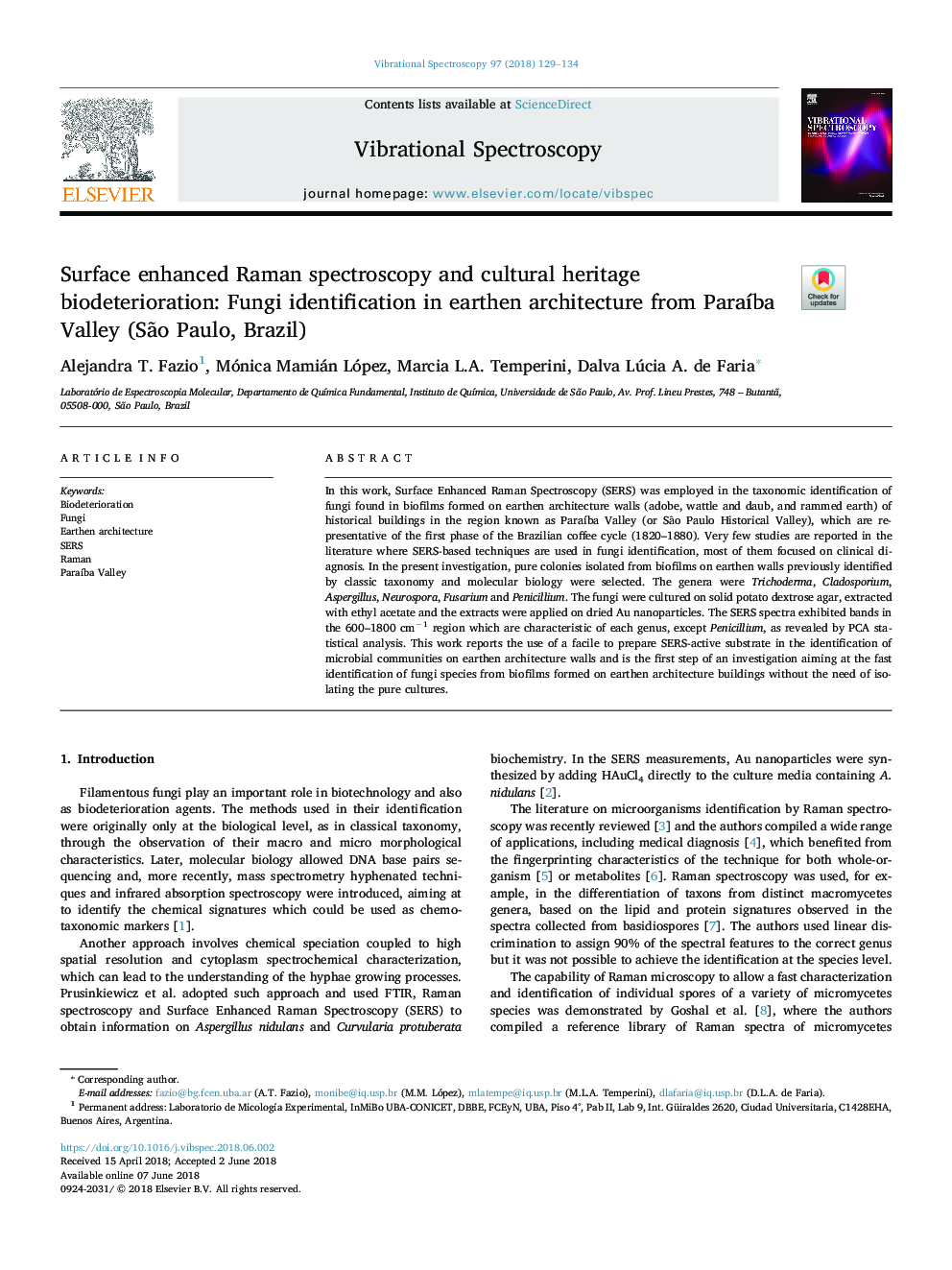| Article ID | Journal | Published Year | Pages | File Type |
|---|---|---|---|---|
| 7690717 | Vibrational Spectroscopy | 2018 | 6 Pages |
Abstract
In this work, Surface Enhanced Raman Spectroscopy (SERS) was employed in the taxonomic identification of fungi found in biofilms formed on earthen architecture walls (adobe, wattle and daub, and rammed earth) of historical buildings in the region known as ParaÃba Valley (or São Paulo Historical Valley), which are representative of the first phase of the Brazilian coffee cycle (1820-1880). Very few studies are reported in the literature where SERS-based techniques are used in fungi identification, most of them focused on clinical diagnosis. In the present investigation, pure colonies isolated from biofilms on earthen walls previously identified by classic taxonomy and molecular biology were selected. The genera were Trichoderma, Cladosporium, Aspergillus, Neurospora, Fusarium and Penicillium. The fungi were cultured on solid potato dextrose agar, extracted with ethyl acetate and the extracts were applied on dried Au nanoparticles. The SERS spectra exhibited bands in the 600-1800 cmâ1 region which are characteristic of each genus, except Penicillium, as revealed by PCA statistical analysis. This work reports the use of a facile to prepare SERS-active substrate in the identification of microbial communities on earthen architecture walls and is the first step of an investigation aiming at the fast identification of fungi species from biofilms formed on earthen architecture buildings without the need of isolating the pure cultures.
Related Topics
Physical Sciences and Engineering
Chemistry
Analytical Chemistry
Authors
Alejandra T. Fazio, Mónica Mamián López, Marcia L.A. Temperini, Dalva Lúcia A. de Faria,
